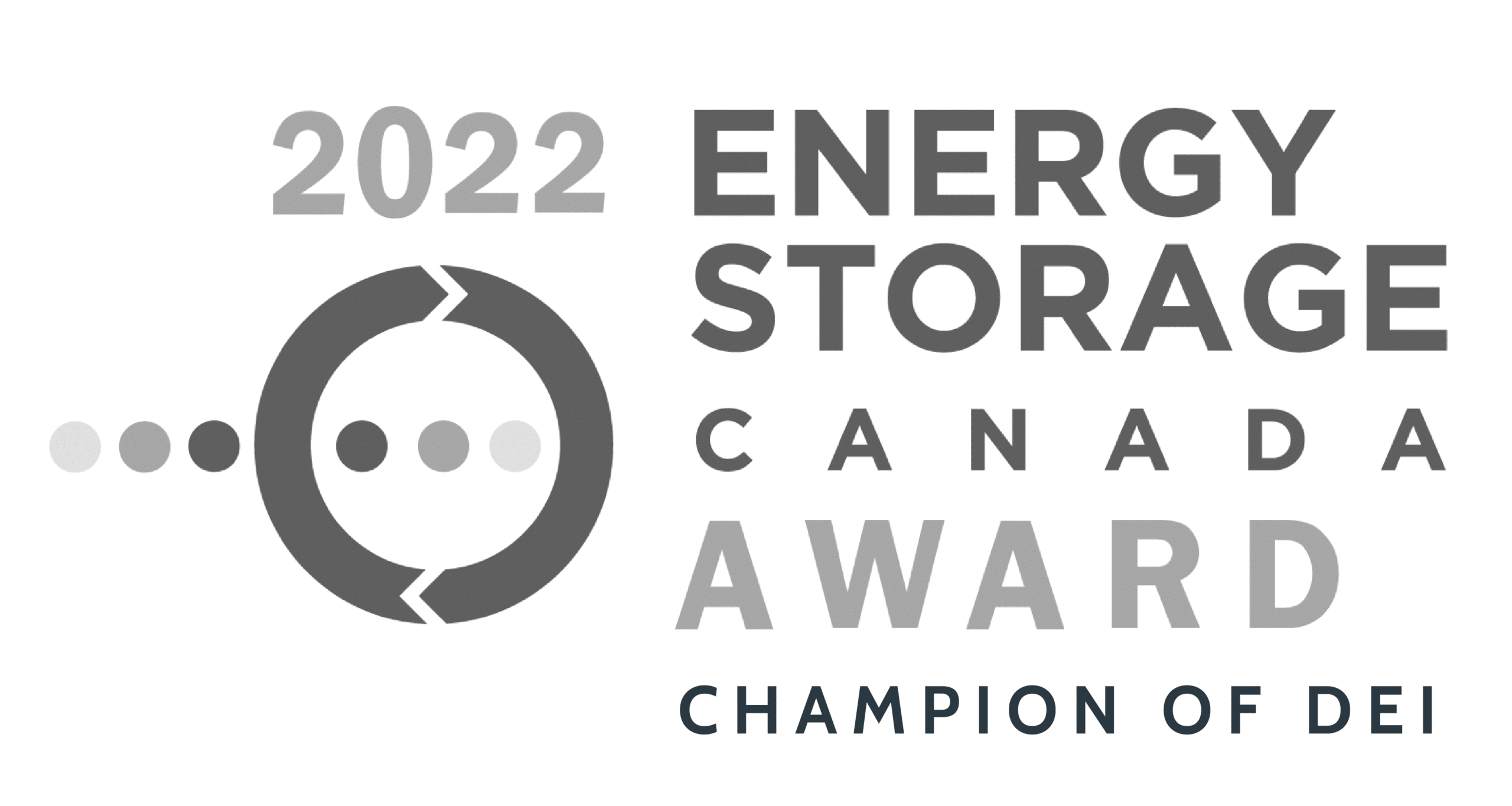Since the Industrial Revolution, energy has become the lifeblood of our economy. And with everything happening in the world—from the conflict in Ukraine to the recent IPCC report underscoring the real impacts of climate change we’re already experiencing—energy resiliency is a conversation that is going to be front and centre for all of us as consumers of electricity.
When we talk about energy resiliency, battery energy storage plays a key part.
Read more for a brief overview of some of the factors influencing the Ontario energy market and answer the question: What is the future of energy storage?
Setting the Stage: A Brief Overview of Global Adjustment
It all started with the Electricity Restructuring Act (Bill 100). In 2004, the Government of Ontario passed this bill, which established the Global Adjustment charge. The purpose of Global Adjustment was threefold:
- To make up the difference between the market rates of electricity (HOEP) and the cost to generate electricity
- To aid in the costs of delivering conservation programs
- To maintain sufficient supply and grid infrastructure
The core argument was that utilities must size all their infrastructure to accommodate energy use for moments of peak demand.
We can use the analogy of a highway to illustrate this. It’s like building a 16-lane highway to handle traffic that occurs only on three holidays a year–an unsustainable business model. However, traffic jams are an acceptable annoyance, but blackouts are not.
As a result, our electricity bills are structured so that Global Adjustment charges all consumers of electricity based on how much they contributed to those moments of peak demand. This allows utilities and ISOs to recoup the costs associated with maintaining a grid that will operate during the highest periods of demand in a year—or as the analogy puts it, the costs of having to build a 16-lane highway where half the lanes are never needed.
All energy users in Ontario pay a Global Adjustment fee, which can account for 40%-60% of their bill. Most customers have their GA based on their total energy use (MWh). However, Class A customers taking part in the Industrial Conservation Program (ICI) have the GA portion of their bill calculated based on their peak demand (MW).
What is the Industrial Conservation Program (ICI)?
The Industrial Conservation Initiative (ICI) program is managed by the IESO and provides an incentive for large energy consumers to shift consumption to off-peak hours.
Under the ICI program, your GA charges are calculated by looking at your total energy use as a share of the total energy use during the 5 hours of the year when the overall demand for electricity in Ontario is at its highest, known as the 5 coincident peaks.
Who is eligible to be a Class A customer in the ICI Program?
- If average peak demand is >5 MW, enrolment is automatic
- If average peak demand is >1 MW and <5 MW, can opt in by June 15
- If a site is classified as a manufacturer (NAICS 31-33), can opt in if average peak demand is >500 kW
The Electrification Generation

We’re undoubtedly racing into a future of the electrification of all major sectors. In fact, the first autonomous, zero-emission container ship took its maiden voyage in late 2021.
“The Yara Birkeland has an all-electric propulsion system (2x 900kW Azipull pods and 2x 700kW tunnel thrusters), which draws its energy from a 7 MWh electricity storage system.”–electrive.com
This highlights the speed and tenacity at which we are pursuing a net zero future.
The transportation sector is set to be the dominant sector in the push to net zero, and as our largest emitting sector in Ontario, this is set to make a significant impact on decarbonization goals, but this will invariably affect the forecast demand of electricity in the future.
According to the Ontario Energy Board’s forecast, there could be as many as 8.5M electric vehicles on the road by 2050. That volume of EVs (electric vehicles) will require more than 50-60 TWhs of electricity on an annual basis and could add to winter peaks by as much as 12-13 GW. By just the end of the decade alone, the IESO estimates that EV adoption will grow from just 50,000 cars currently to over half a million.
Electrification of our economy doesn’t stop at transportation. We’re pursuing electrification in everything from building heating to steel manufacturing. This scale of electrification is driving innovation in the grid and across sectors and has even led to Canada’s first business-led electrification task force.
Technology
As a climate tech company, Peak Power deeply understands the role technology will play in our push to net zero. There is a strong perspective out there to “green the grid and electrify everything” to get to net zero, but this requires us to adopt and scale new technology on an unprecedented scale.
Put simply, the way our grid is currently built as illustrated by the 16-lane highway example, is an unsustainable model. Energy storage and managed charging are already helping to solve this problem and enable the greening and modernization of the grid with things like
- Managed and bi-directional EV charging to charge vehicles during times of low demand and even sell electricity back to the grid. The use of this technology is being illustrated by our Peak Drive pilot project.
- Utility or privately owned Distributed energy resources (DERs) to decentralize the electricity grid. DERs encompass several generation and storage technologies: everything from rooftop solar to front-of-the-meter and behind-the-meter battery storage systems.
- Virtual power plants to aggregate DERs and enable them to take part in the electricity market. As more renewable energy generation comes online and more, it is becoming harder for utilities to balance increasingly variable supply and demand; virtual power plant technologies are helping to solve this.
The pervasiveness of these technologies is only set to grow, and public and private policy is moving in a direction to enable this.
The Policy Perspective
The underlying policies driving our transition and encouraging the adoption of storage technologies are net zero policies—at the local, national, international, and corporate levels.
Governments and corporations are both implementing policies that either encourage or mandate our transition to net zero. From the legally binding Paris Agreement to Ontario’s Bill 32, the Carbon Budget Accountability Act.
Ontario’s Carbon Budget Accountability Act mandates carbon budgets for specific years and reporting by the Minister of Environment and the Premier. In fact, if the Minister and the Premier miss a reporting deadline, they must pay a financial penalty of 10% of their annual salary.
Carbon Budget Accountability Act | Mandated Targets
(a) Ontario’s total net emissions of greenhouse gases from 2023 to 2029 do not exceed 926 megatonnes;
(b) Ontario’s total net emissions of greenhouse gases from 2030 to 2034 do not exceed 422 megatonnes;
(c) Ontario’s total net emissions of greenhouse gases from 2035 to 2039 do not exceed 223 megatonnes;
(d) Ontario’s total net emissions of greenhouse gases from 2040 to 2044 do not exceed 59 megatonnes; and
(e) Ontario’s total net emissions of greenhouse gases in 2045 and in each year thereafter shall not exceed 0 megatonnes
This just one example of a plethora of policies being implemented to drive our transition to net zero.
Learn more from industry experts about the Future of Energy Storage in Ontario
Peak Power and Ontario Energy leaders from the Independent Electricity System Operator (IESO), Ontario Energy Board, and Oshawa Power came together on March 15th to discuss the future of energy storage in Ontario.
In this webinar, they discussed:
- How regulatory policies, technologies, business models, and external factors could affect your operations and growth
- How battery energy storage systems can improve your bottom line and contribute to your decarbonization and net-zero goals
- How commercial real estate owners, developers, and property managers can position their portfolios to take advantage of the upcoming opportunities while managing risk in an environment that is changing quickly
You can watch it on demand by viewing the video above.





